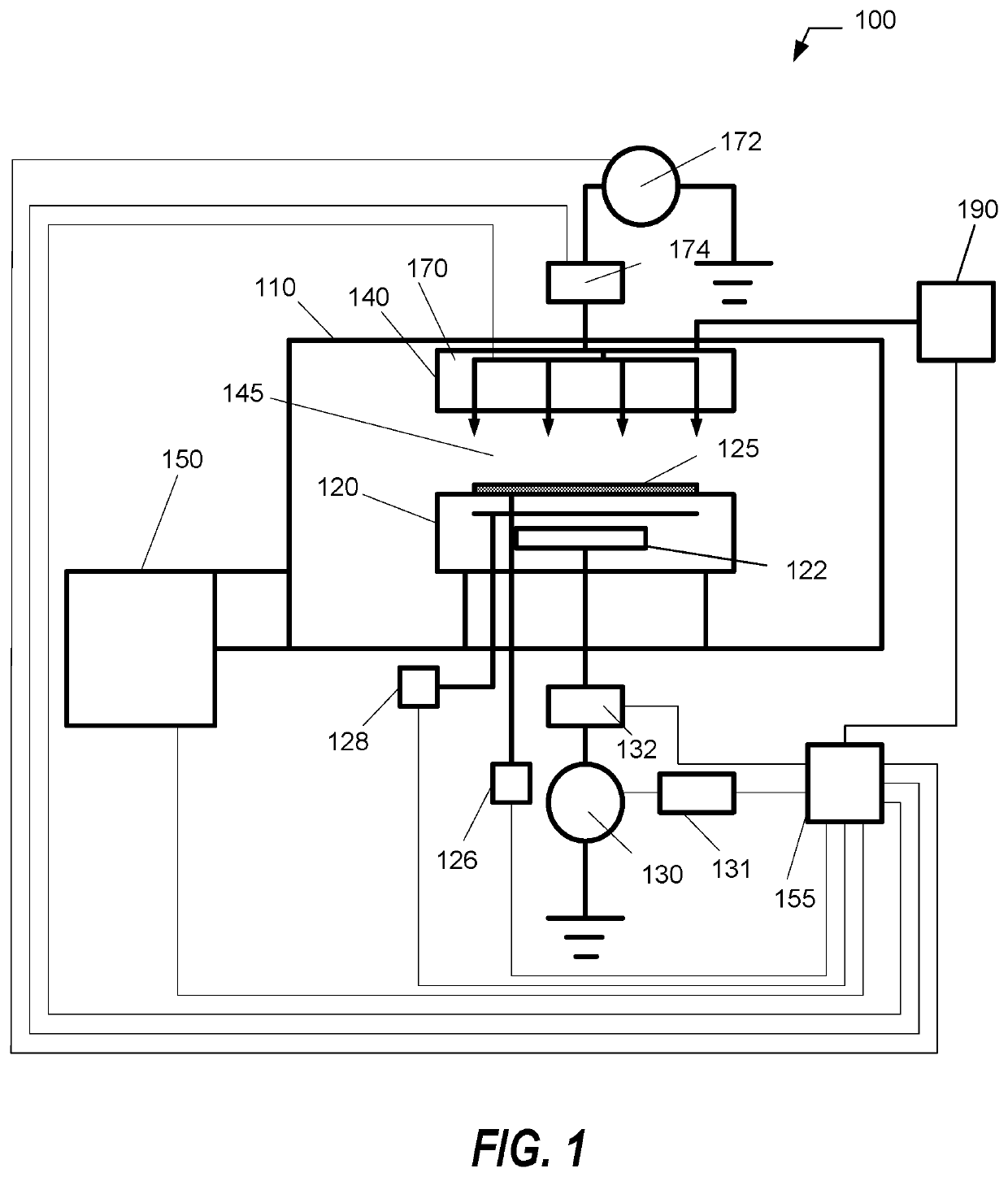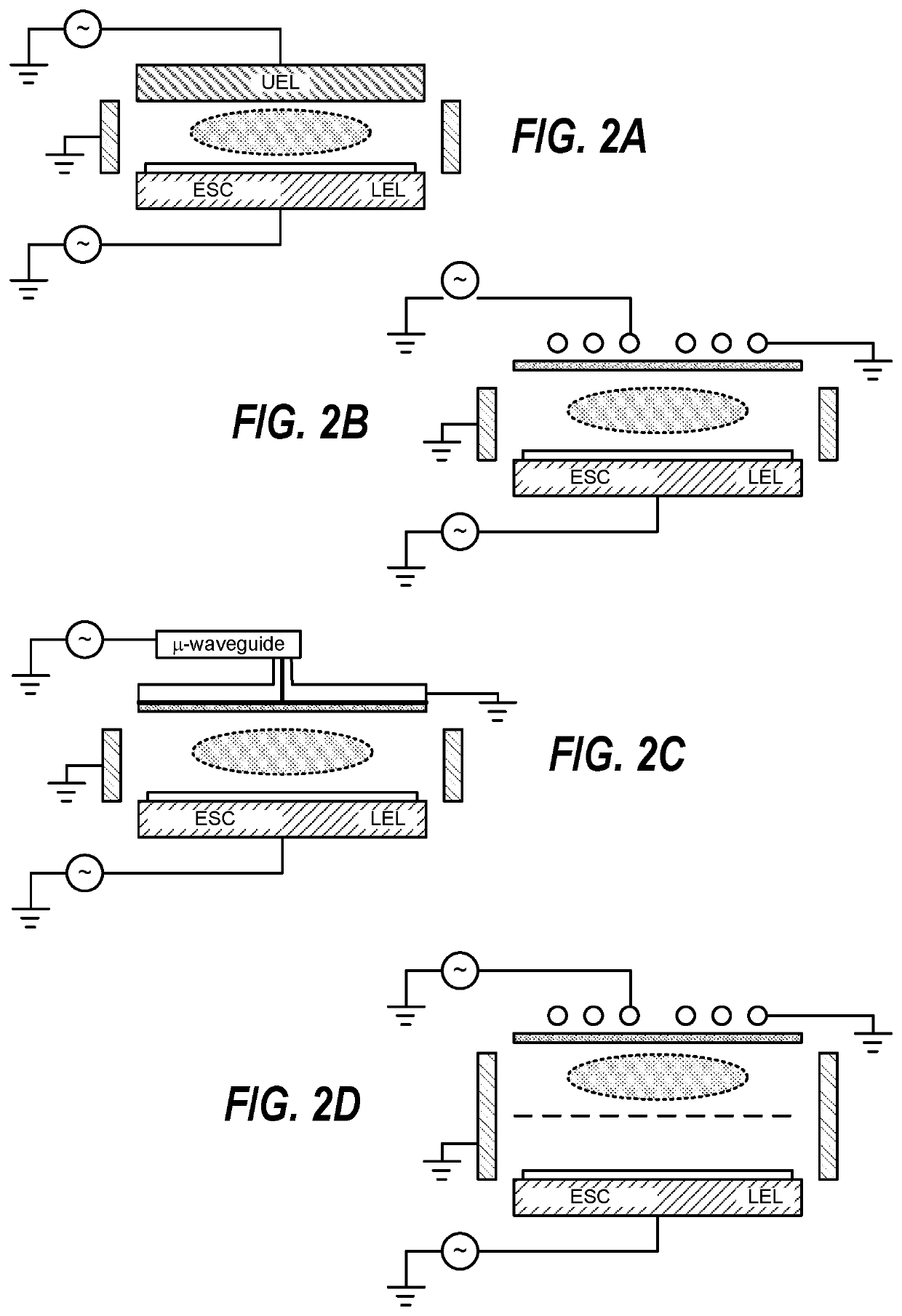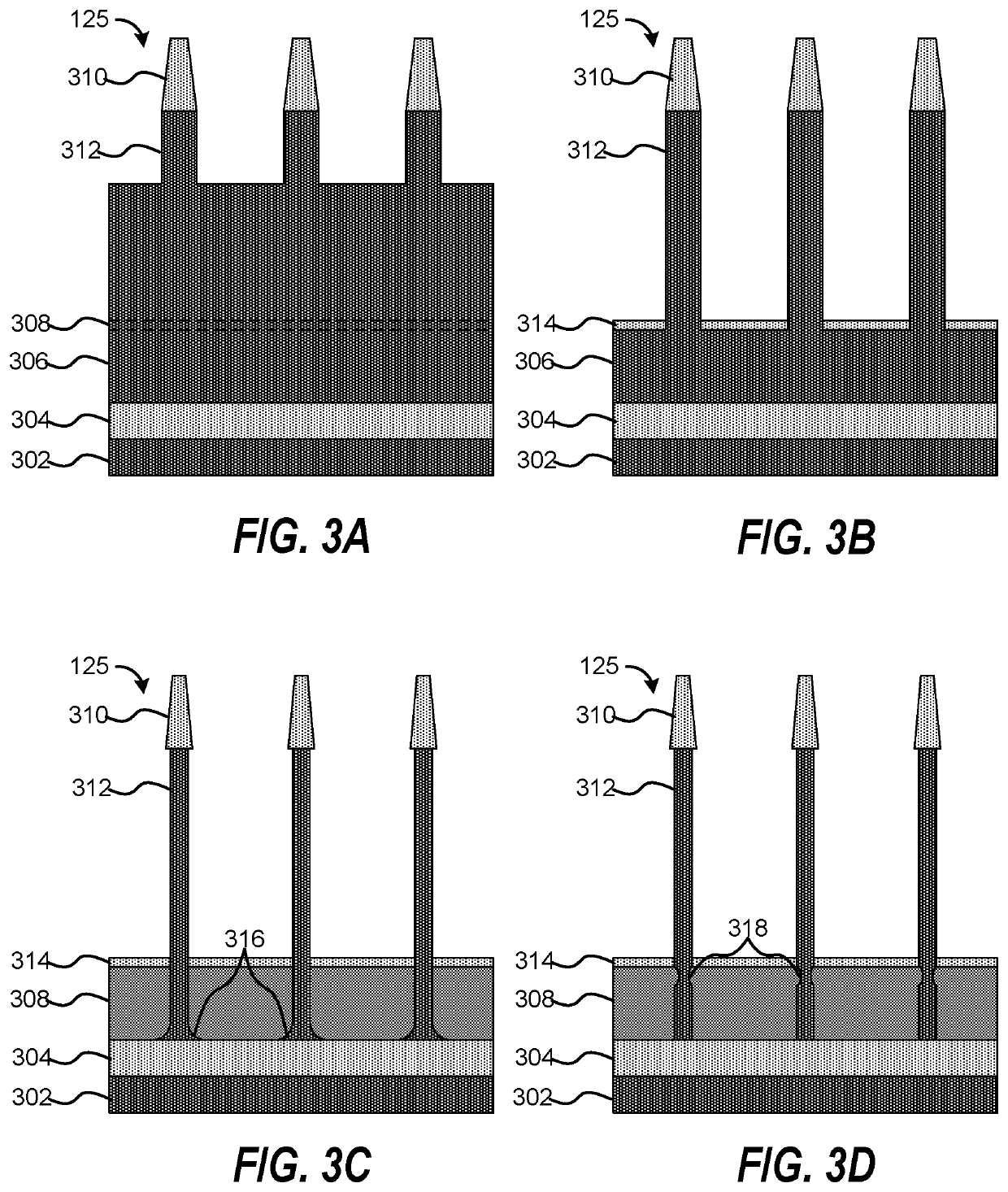Surface modification process
a surface modification and surface technology, applied in the field of surface modification methods and systems, can solve the problems of increasing the difficulty of scaling efforts, arde), and the difficulty of managing uniformity in plasma etching processes, and the current approach to patterning and pattern transfer by balancing these trade-offs is not sustainabl
- Summary
- Abstract
- Description
- Claims
- Application Information
AI Technical Summary
Benefits of technology
Problems solved by technology
Method used
Image
Examples
Embodiment Construction
[0030]Techniques herein pertain to device fabrication using precision etch techniques. Several instances manifest in semiconductor manufacturing in both front end of line (FEOL, e.g., transistor fabrication) through to the back end of line (BEOL, e.g., interconnect fabrication), where oxide and nitride films (typically silicon-containing, in nature) need to be etched with a high degree of precision.
[0031]Numerous fabrication sequences in semiconductor manufacturing demand precision etch techniques. Examples, which will be discussed later, include: (1) gate spacer etch for both 2D (two-dimensional) and 3D (three-dimensional) device structures, (2) spacer etch for sidewall image transfer (SIT) for multi-patterning, (3) mandrel removal from a post-spacer etch SIT structure, and (4) liner etch from a raised structure.
[0032]During formation of various features on and / or in a semiconductor substrate, various etch steps are required. Various etch techniques may be used, including wet etch ...
PUM
| Property | Measurement | Unit |
|---|---|---|
| pressure | aaaaa | aaaaa |
| pressure | aaaaa | aaaaa |
| pressure | aaaaa | aaaaa |
Abstract
Description
Claims
Application Information
 Login to View More
Login to View More - R&D
- Intellectual Property
- Life Sciences
- Materials
- Tech Scout
- Unparalleled Data Quality
- Higher Quality Content
- 60% Fewer Hallucinations
Browse by: Latest US Patents, China's latest patents, Technical Efficacy Thesaurus, Application Domain, Technology Topic, Popular Technical Reports.
© 2025 PatSnap. All rights reserved.Legal|Privacy policy|Modern Slavery Act Transparency Statement|Sitemap|About US| Contact US: help@patsnap.com



